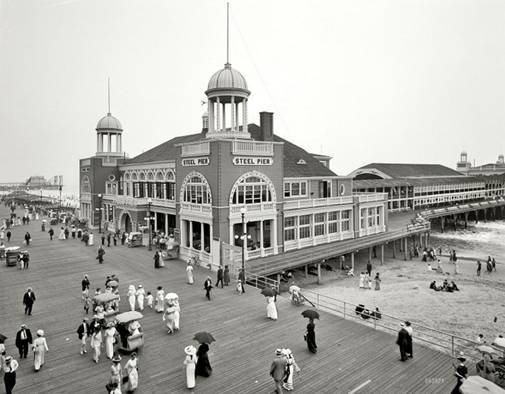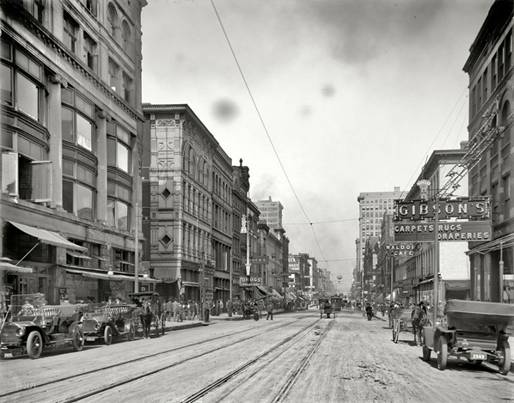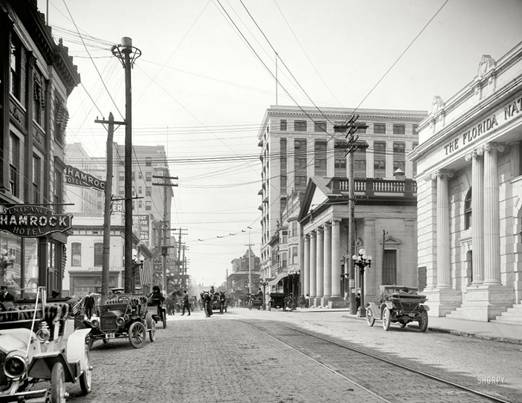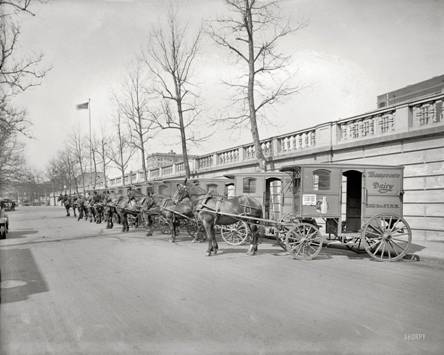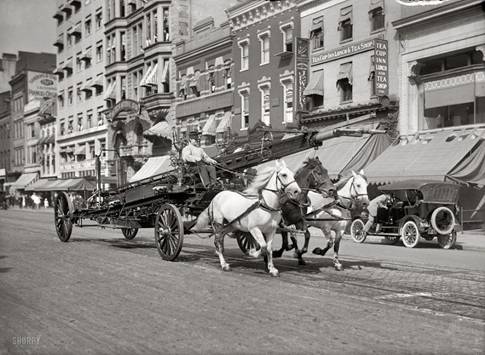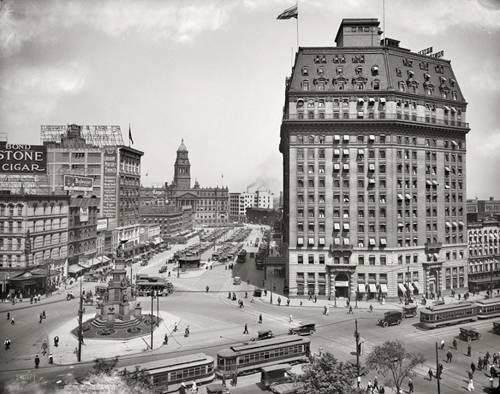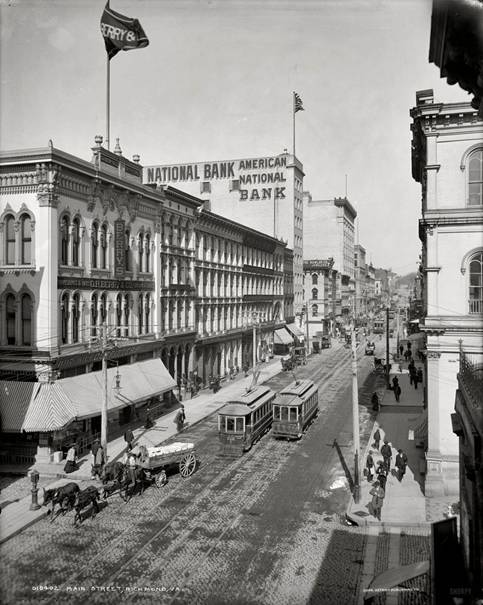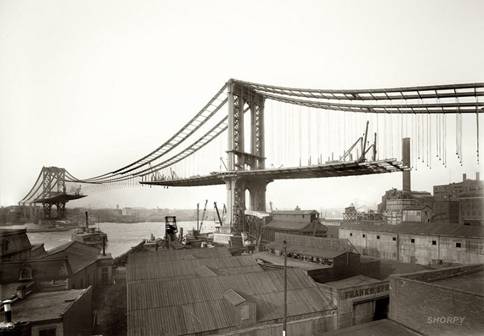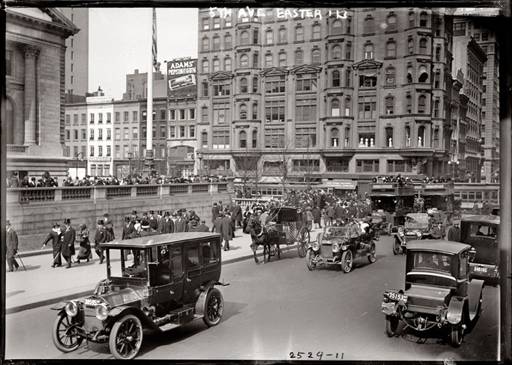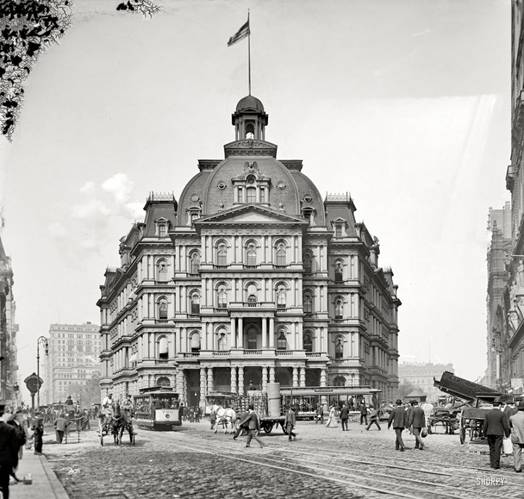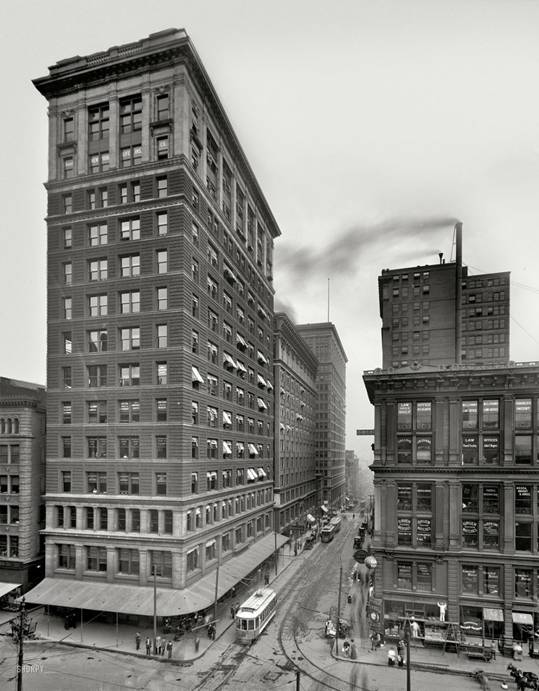


Hicksville High School Hicksville, New York
| The Editors: | |
|---|---|
| Buffalo Bob Casale '61 | Linda (Piccerelli) Hayden '60 |
| Pat (Koziuk) Driscoll '56 | Bob (Gleason) Wesley '61 |

To contact the editors, email


People Looking for People
We've taken a new approach to this section. It's been re-organized by Henry Lichtenstein as an online spreadsheet. Rather than publish the list here, it's now available below. If you have found the person you are looking for, please let the editors know so the name can be removed from the list. If there's someone you're looking for, just send your request and we'll be happy to add it to the list. If anyone knows these folks, send an email to:
HixNews Subscribers Name & Class List
We have an organized online spreadsheet that presents our current membership: available below. If you wish to add, subtract, or modify an entry on this list, send an email to:
I think this says it all if anyone ever asks why we're putting so much time into getting the HICKSVILLE VIETNAM WAR ERA MEMORIAL constructed, especially the paragraphs I've highlighted In James Webbs Heroes of the Vietnam Generation. I received this month's Honoring Our Veterans write-up from a good friend of mine who is well aware of what we're doing.
Joe Carfora 1962
Hicksville Vietnam War Era Memorial - PROJECT UPDATE
November was an excellent month, with 12 new names added to the Confirmed List of Names, for a new total of 1,877! This well emphasizes the continued need for the help of the HixNews readership to insure we leave no one behind who deserves to be included in this Memorial.
Two months ago we announced the inclusion of Reserve and National Guard members as part of the Memorial, provided they served during the Vietnam War Era and meet all other qualification requirements. We have already added a good number of these names to the Confirmed List, but if you previously submitted your name, or the name of a friend, who under the old rules was turned down and do not currently see that name on the Confirmed List, please help us by resubmitting it to me for reconsideration.
November's celebration of Veterans Day on Monday, the 11th, was particularly heartwarming as the media used the entire weekend preceding it to show our nation's thanks for the service of all current and past members of our nation's Armed Forces, a lesson learned from the days when the public often did not acknowledge the service of the Vietnam Veteran when he or she returned home.
As always, to see the full report on the Memorial's status, please see this month's update by clicking on the Honoring Our Veterans page of this newsletter. Clicking on the two links near the bottom of the update will bring you to the complete Confirmed and Unconfirmed List of Names as of the end of November.
We wish each of you and your families All the Best for a Joyous Holiday Season and a Happy, Healthy and Prosperous 2014!
On behalf of the Project Team,
Joe Carfora, HHS '62

FOR IMMEDIATE RELEASE - November 11, 2013
THE GLASS MENAGERIE, a Greenwich Village 70-voice community chorus, brings Bach's Magnificat in D to Soho's historic Basilica of St. Patrick's Old Cathedral (Old St. Pat's), corner of Prince and Mott Streets, on Saturday, December 14, at 8 p.m.
Please join us for our glorious 2013 Winter Concert as we raise our 70 voices strong to sing, with guest soloists and, in addition, a Baroque chamber ensemble with young artists from The Juilliard School:
- Johann Sebastian Bach's monumental Magnificat in D Major
- Robert DeCormier's suite of Christmas spirituals, Shout for Joy
- . . . and our traditional Holiday Sing-along
This is our 29th year of singing. Members come from throughout the New York metropolitan area, from all walks of life; many are music teachers. Our founder and artistic director, Dr. Susan Glass, is a member of NYU's Music Education Faculty and a noted music educator.
Tickets are available at the door: $20 ($15 for senior and students).
For more information, consult our website: www.glassmenagerie.org
The Glass Menagerie's 2013 Winter Concert is made possible in part with public funds from the Manhattan Community Arts Fund, supported by the New York City Department of Cultural Affairs in partnership with the City Council and administered by Lower Manhattan Cultural Council.
The Winter Concert is also is made possible in part with public funds from the Fund for Creative Communities, supported by New York State Council on the Arts with the support of Governor Andrew Cuomo and the New York State Legislature and administered by Lower Manhattan Cultural Council.
The Newsletter
Photo Gallery
These were really professional photographers who took these pictures...
Note how sharp and clear most of the photos are and these are over a 100 years old.
There aren't many old photos as good and remember they didn't have film or digital photo cards in those days. Most probable is that these were glass plate images and taken thru a pin hole type camera and the opening was timed just right to get a dark enough exposure. Developing was another tedious task which they had to be careful not to break the glass!
American Cities a Century ago
Woodward Avenue , Detroit , Michigan , in 1917
Atlantic City , 1910
The main street of Memphis , north of Avenue Gayoso, 1910
Station - Louisville-Nashville, Florida , in 1910
Forsyth Street , Jacksonville , Florida , in 1910 (Love those cars.)
The beach in Atlantic City , 1915 (Note the men in coats and ties.)
Grant Avenue after an earthquake in San Francisco in 1906 I didn't realize
there was so much destruction in that earthquake.
Carts for transporting dairy Thompson , Washington , 1927
How in the world did the dairy get those horses so evenly lined up.
Washington , DC , 1914
Not so thoughty having those horses run on a railroad tracks
(thoughty? Must have been a popular word back in the day)
Cadillac Square , Detroit , Michigan , 1916
Ninth Street , Washington DC , 1915
I wouldn't want to walk across this street in a long dress
Corner of Fifth Avenue and 42nd Street , New York , 1910
Broad Street north of Spruce Street , Philadelphia , 1905
View of Manhattan Bridge from Brooklyn in 1909
Fire at 55th Street , New York , 1915
 Fifth Avenue , New York , 1913
Fifth Avenue , New York , 1913
Wabash Avenue , Chicago , 1907
The New York Public Library, New York , 1915.
Didn't realize they had 4-laners in those days.
Wall Street, New York , 1911.
The 2 sidewalks together are as wide as the street in this pic.
Fifth Avenue , New York , 1913.
Look at those top hats!
Manhattan , 1907
The northern part of Fifth Avenue , New York , 1913.
Must have been something big going on. Look at the crowds and traffic jams.
City Hall in New York
Dexter Avenue and the Capitol, Montgomery , Alabama , in 1906.
WoW! Really wide street. - 6-lane and it's practically empty.
Valnut Street , Cincinnati , Ohio , 1910
(that's Walnut Street )
Washington , DC , 1913.
Broadway and the building of "The Times," New York , 1915.
Click here to see other photos
Birthdays & Anniversaries
Birthdays
- 1: Jim Wise (TX); athy "Cookie" (Koziuk) Hannaman (FL); laine (Grecz) Libert (FL); harles Coney (VT)
- 2: Bob Monet (L.I.); obert "Whitey" Otten (SC); ayle (Whitson) McCarthy (L.I.); eb (Coppola) Schaller (CT)
- 3: Lois (Mohr) Larghi (L.I.); ob Casale (GA); iane (Ofenloch) O'Brien; uth (Olsen) Collins (L.I.); om Skelly (SC)
- 6: Ann (Cassese) Costantino (L.I./FL)
- 7: Margaret (Kozma) Ryan (FL)
- 8: John Ohrnberger (VA); ark Leippert (L.I.); ickey (Powers) McCleary (HX)
- 9: Fran (Robertson) Galante (HX)
- 10: John Hattenback (FL); Joy (Watson) Haller (FL)
- 11: Anne (Sullivan) Kinsella (HX); Carol Dichtenberg
- 12: Bob Heiss (L.I.); Peggy (O'Neil) Delia (HX); Bruce Glatt
- 13: "Murry" Dalaimo (NV)
- 15: Minerva (Moddle) Kassinger (L.I.); Susan Stahley (VA); Pat (Ofenloch) Longo
- 16: Jeanne (Dethlefsen) Cornelsen (SC); James Shubert (NC); Arlene Andersen (NH)
- 17: Howie Toomey
- 18: Joe Ingino (L.I.); John Peter Petrone (FL); James Gorman; Carol (Wills) Erlwein (FL); Ed Cochran (VA)
- 19: Elsie (Bartels) Grubel (L.I.)
- 20: Nancy Graham (CA); Linda (Walker) Boehm
- 21: Susan (Handwerk) Ackerman
- 23: Donald Moore; Roger Weiss (MA)
- 25: Bill Fogelberg (VA); Stephanie (Hill) Vetter (L.I.)
- 26: Mike Levins (NC); 26: Lew Fenigstein (NY)
- 27: Marilyn (Bowles) Nejman (NY)
- 29: Nancy Graham (CA); Harvey J. Olitsky (GA); Alberta (Hunt) Bolettier (GA); Maxene (Frimmer) Grove (TX); Lisa (Neuenhoff) Esposito
- 30: Christopher Composto (HX)
- 31: Leona (O'Hanley) Schilling (GA)
Anniversaries
- 12/01/1962: Chet and Betty Nichols
- 12/01/1968: John and Maureen (Carey) Ostroski (FL)
- 12/02/1961: Dennis and Catherine (Arico) Joannides (NY)
- 12/05/1981: Kathy "Cookie" (Koziuk) and Roy Hannaman (FL)
- 12/07/1968: Jeanne (Goodman) and Richie Keliher (FL)
- 12/14/1962: Betty (Funfgeld) and Eric Eriksen (L.I.)
- 12/17/1976: Annamay (Thomas) and Rich Adams (L.I.)
- 12/24/1995: Bob and Greta (Dixon) Dean (NM)
- 12/26/1954: Ruben and Gerry (Bracero) Callejas (TX)
- 12/28/1985: Nathan and Deborah (Simmons) Jacobus (AZ)
Honoring our Veterans

Heroes of the Vietnam Generation
By James Webb
The rapidly disappearing cohort of Americans that endured the Great Depression and then fought World War II is receiving quite a send-off from the leading lights of the so-called 60s generation. Tom Brokaw has published two oral histories of "The Greatest Generation" that feature ordinary people doing their duty and suggest that such conduct was historically unique.
Chris Matthews of "Hardball" is fond of writing columns praising the Navy service of his father while castigating his own baby boomer generation for its alleged softness and lack of struggle. William Bennett gave a startling condescending speech at the Naval Academy a few years ago comparing the heroism of the "D-Day Generation" to the drugs-and-sex nihilism of the "Woodstock Generation." And Steven Spielberg, in promoting his film "Saving Private Ryan," was careful to justify his portrayals of soldiers in action based on the supposedly unique nature of World War II.
An irony is at work here. Lest we forget, the World War II generation now being lionized also brought us the Vietnam War, a conflict which today's most conspicuous voices by and large opposed, and in which few of them served. The "best and brightest" of the Vietnam age group once made headlines by castigating their parents for bringing about the war in which they would not fight, which has become the war they refuse to remember.
Pundits back then invented a term for this animus: the "generation gap." Long, plaintive articles and even books were written examining its manifestations. Campus leaders, who claimed precocious wisdom through the magical process of reading a few controversial books, urged fellow baby boomers not to trust anyone over 30. Their elders who had survived the Depression and fought the largest war in history were looked down upon as shallow, materialistic, and out of touch.
Those of us who grew up, on the other side of the picket line from that era's counter-culture can't help but feel a little leery of this sudden gush of appreciation for our elders from the leading lights of the old counter-culture. Then and now, the national conversation has proceeded from the dubious assumption that those who came of age during Vietnam are a unified generation in the same sense as their parents were, and thus are capable of being spoken for through these fickle elites.
In truth, the " Vietnam generation" is a misnomer. Those who came of age during that war are permanently divided by different reactions to a whole range of counter-cultural agendas, and nothing divides them more deeply than the personal ramifications of the war itself. The sizable portion of the Vietnam age group who declined to support the counter-cultural agenda, and especially the men and women who opted to serve in the military during the Vietnam War, are quite different from their peers who for decades have claimed to speak for them. In fact, they are much like the World War II generation itself. For them, Woodstock was a side show, college protestors were spoiled brats who would have benefited from having to work a few jobs in order to pay their tuition, and Vietnam represented not an intellectual exercise in draft avoidance, or protest marches but a battlefield that was just as brutal as those their fathers faced in World War II and Korea.
Few who served during Vietnam ever complained of a generation gap. The men who fought World War II were their heroes and role models. They honored their father's service by emulating it, and largely agreed with their father's wisdom in attempting to stop Communism's reach in Southeast Asia .
The most accurate poll of their attitudes (Harris, 1980) showed that 91 percent were glad they'd served their country, 74 percent enjoyed their time in the service, and 89 percent agreed with the statement that "our troops were asked to fight in a war which our political leaders in Washington would not let them win." And most importantly, the castigation they received upon returning home was not from the World War II generation, but from the very elites in their age group who supposedly spoke for them.
Nine million men served in the military during Vietnam War, three million of whom went to the Vietnam Theater. Contrary to popular mythology, two-thirds of these were volunteers, and 73 percent of those who died were volunteers. While some attention has been paid recently to the plight of our prisoners of war, most of whom were pilots; there has been little recognition of how brutal the war was for those who fought it on the ground.
Dropped onto the enemy's terrain 12,000 miles away from home, America 's citizen-soldiers performed with a tenacity and quality that may never be truly understood. Those who believe the war was fought incompletely on a tactical level should consider Hanoi 's recent admission that 1.4 million of its soldiers died on the battlefield, compared to 58,000 total U.S. dead.
Those who believe that it was a "dirty little war" where the bombs did all the work might contemplate that is was the most costly war the U.S. Marine Corps has ever fought-five times as many dead as World War I, three times as many dead as in Korea, and more total killed and wounded than in all of World War II.
Significantly, these sacrifices were being made at a time the United States was deeply divided over our effort in Vietnam . The baby-boom generation had cracked apart along class lines as America 's young men were making difficult, life-or-death choices about serving. The better academic institutions became focal points for vitriolic protest against the war, with few of their graduates going into the military. Harvard College , which had lost 691 alumni in World War II, lost a total of 12 men in Vietnam from the classes of 1962 through 1972 combined. Those classes at Princeton lost six, at MIT two. The media turned ever more hostile. And frequently the reward for a young man's having gone through the trauma of combat was to be greeted by his peers with studied indifference of outright hostility.
What is a hero? My heroes are the young men who faced the issues of war and possible death, and then weighed those concerns against obligations to their country. Citizen-soldiers who interrupted their personal and professional lives at their most formative stage, in the timeless phrase of the Confederate Memorial in Arlington National Cemetery , "not for fame of reward, not for place of for rank, but in simple obedience to duty, as they understood it." Who suffered loneliness, disease, and wounds with an often-contagious elan. And who deserve a far better place in history than that now offered them by the so-called spokesman of our so-called generation.
Mr. Brokaw, Mr. Matthews, Mr. Bennett, Mr. Spielberg, meet my Marines. 1969 was an odd year to be in Vietnam . Second only to 1968 in terms of American casualties, it was the year made famous by Hamburger Hill, as well as the gut-wrenching Life cover story showing pictures of 242 Americans who had been killed in one average week of fighting. Back home, it was the year of Woodstock, and of numerous anti-war rallies that culminated in the Moratorium march on Washington. The My Lai massacre hit the papers and was seized upon the anti-war movement as the emblematic moment of the war. Lyndon Johnson left Washington in utter humiliation.
Richard Nixon entered the scene, destined for an even worse fate. In the An Hoa Basin southwest of Danang, the Fifth Marine Regiment was in its third year of continuous combat operations. Combat is an unpredictable and inexact environment, but we were well led. As a rifle platoon and company commander, I served under a succession of three regimental commanders who had cut their teeth in World War II, and four different battalion commanders, three of whom had seen combat in Korea. The company commanders were typically captains on their second combat tour in Vietnam, or young first lieutenants like myself who were given companies after many months of "bush time" as platoon commanders in he Basin's tough and unforgiving environs.
The Basin was one of the most heavily contested areas in Vietnam, its torn, cratered earth offering every sort of wartime possibility. In the mountains just to the west, not far from the Ho Chi Minh Trail, the North Vietnamese Army operated an infantry division from an area called Base Area 112. In the valleys of the Basin, main-force Viet Cong battalions whose ranks were 80 percent North Vietnamese Army regulars moved against the Americans every day. Local Viet Cong units sniped and harassed. Ridgelines and paddy dikes were laced with sophisticated booby traps of every size, from a hand grenade to a 250-pound bomb. The villages sat in the rice paddies and tree lines like individual fortresses, crisscrossed with the trenches and spider holes, their homes sporting bunkers capable of surviving direct hits from large-caliber artillery shells. The Viet Cong infrastructure was intricate and permeating. Except for the old and the very young, villagers who did not side with the Communists had either been killed or driven out to the government controlled enclaves near Danang.
In the rifle companies, we spent the endless months patrolling ridgelines and villages and mountains, far away from any notion of tents, barbed wire, hot food, or electricity. Luxuries were limited to what would fit inside one's pack, which after a few "humps" usually boiled down to letter-writing material, towel, soap, toothbrush, poncho liner, and a small transistor radio.
We moved through the boiling heat with 60 pounds of weapons and gear, causing a typical Marine to drop 20 percent of his body weight while in the bush. When we stopped we dug chest-deep fighting holes and slit trenches for toilets. We slept on the ground under makeshift poncho hootches, and when it rained we usually took our hootches down because wet ponchos shined under illumination flares, making great targets. Sleep itself was fitful, never more than an hour or two at a stretch for months at a time as we mixed daytime patrolling with night-time ambushes, listening posts, foxhole duty, and radio watches. Ringworm, hookworm, malaria, and dysentery were common, as was trench foot when the monsoons came. Respite was rotating back to the mud-filled regimental combat base at An Hoa for four or five days, where rocket and mortar attacks were frequent and our troops manned defensive bunkers at night. Which makes it kind of hard to get excited about tales of Woodstock, or camping at the Vineyard during summer break.
We had been told while training that Marine officers in the rifle companies had an 85 percent probability of being killed or wounded, and the experience of "Dying Delta," as our company was known, bore that out. Of the officers in the bush when I arrived, our company commander was wounded, the weapons platoon commander wounded, the first platoon commander was killed, the second platoon commander was wounded twice, and I, commanding the third platoons fared no better. Two of my original three-squad leaders were killed, and the third shot in the stomach. My platoon sergeant was severely wounded, as was my right guide. By the time I left, my platoon I had gone through six radio operators, five of them casualties.
These figures were hardly unique; in fact, they were typical. Many other units; for instance, those who fought the hill battles around Khe Sanh, or were with the famed Walking Dead of the Ninth Marine Regiment, or were in the battle of Hue City or at Dai Do, had it far worse.
When I remember those days and the very young men who spent them with me, I am continually amazed, for these were mostly recent civilians barely out of high school, called up from the cities and the farms to do their year in hell and he return. Visions haunt me every day, not of the nightmares of war but of the steady consistency with which my Marines faced their responsibilities, and of how uncomplaining most of them were in the face of constant danger. The salty, battle-hardened 20-year-olds teaching green 19-year-olds the intricate lessons of the hostile battlefield. The unerring skill of the young squad leaders as we moved through unfamiliar villages and weed-choked trails in the black of night. The quick certainty when a fellow Marine was wounded and needed help. Their willingness to risk their lives to save other Marines in peril. To this day it stuns me that their own countrymen have so completely missed the story of their service, lost in the bitter confusion of the war itself.
Like every military unit throughout history we had occasional laggards, cowards, and complainers. But in the aggregate, these Marines were the finest people I have ever been around. It has been my privilege to keep up with many of them over the years since we all came home. One finds in them very little bitterness about the war in which they fought. The most common regret, almost to a man, is that they were not able to do more for each other and for the people they came to help.
It would be redundant to say that I would trust my life to these men. Because I already have in more ways than I can ever recount. I am alive today because of their quiet, unaffected heroism. Such valor epitomizes the conduct of Americans at war from the first days of our existence. That the boomer elites can canonize this sort of conduct in our fathers' generation while ignoring it in our own is more than simple oversight. It is a conscious, continuing travesty.
Memory Lane
F L A S H B A C K
Suzanne (Garrett) Cullen '56
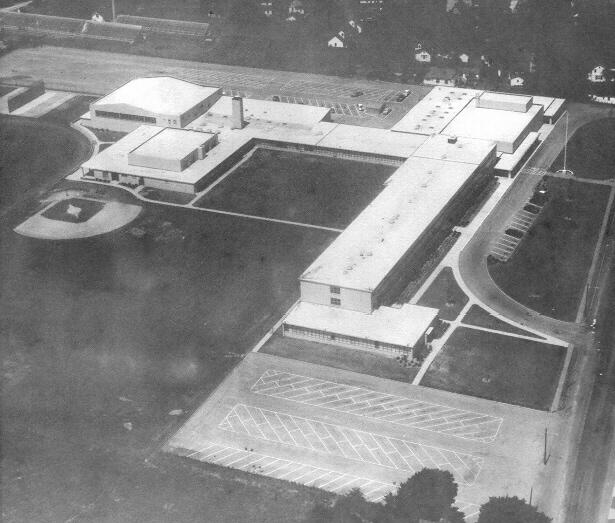 I just read Pat Driscoll's article in the latest issue of HixNews and enjoyed it. I remember riding my bike on Jerusalem Ave, but I was in Jr. or Sr. High and my parents were not too keen on my
I just read Pat Driscoll's article in the latest issue of HixNews and enjoyed it. I remember riding my bike on Jerusalem Ave, but I was in Jr. or Sr. High and my parents were not too keen on my 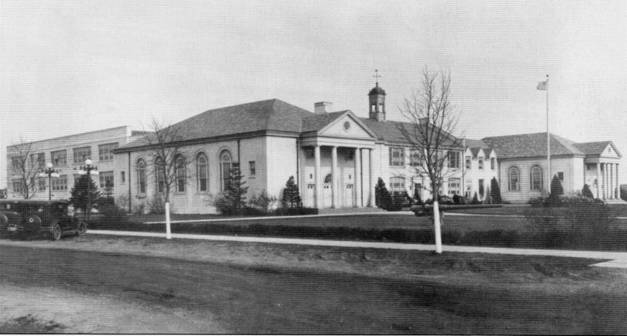 riding too far from home. I was usually with my cousin Claire who was a bit older. It was fun back then as the traffic was minimal and there were not as many things or people to fear. I also went horseback riding with Arlene Keller's brother John. We rode on the property where the new High School was built on Division Avenue.
riding too far from home. I was usually with my cousin Claire who was a bit older. It was fun back then as the traffic was minimal and there were not as many things or people to fear. I also went horseback riding with Arlene Keller's brother John. We rode on the property where the new High School was built on Division Avenue.
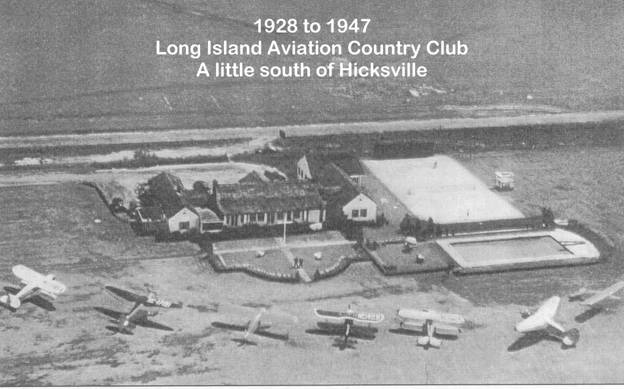 The club near the Motor Parkway was The Hicksville Aviation Country Club. My mom spoke of it quite often, and both my mom & dad flew in those open cockpit planes as passengers when they were young. Dad would not fly commercially, but I would think they're far safer than the ones he flew in back then. He was a Detective for the Nassau County Police Department and had to pick up a prisoner in San Francisco and had to bring him back for trial. Even then he went by train and it must have taken him forever.
The club near the Motor Parkway was The Hicksville Aviation Country Club. My mom spoke of it quite often, and both my mom & dad flew in those open cockpit planes as passengers when they were young. Dad would not fly commercially, but I would think they're far safer than the ones he flew in back then. He was a Detective for the Nassau County Police Department and had to pick up a prisoner in San Francisco and had to bring him back for trial. Even then he went by train and it must have taken him forever.
My mom told me that she saw Lindbergh fly over on his way to Paris. Since there were hardly any planes around in those days, it had to be quite an event. I wish now that I had asked more questions about the area back then so I could contribute more HixNews now.
My grandfather raised potatoes, cabbage, corn and cucumbers on his farm. He made sauerkraut and maybe pickles too.
We had fun without all the electronic stuff that the kids have today. We climbed trees, played baseball, rode bikes and always kept busy doing something all day long. I also recall playing with paper dolls quite often when I was young.
I remember when the Ringling Bros Circus was on Old Country Road just West of the Wantagh State Parkway. My Aunt Ruth took me and my Cousin Betty to it as I recall. I also remember going on a field trip to a glass blowing factory somewhere near West John St. or Duffy Avenue. That trip was etched in my mind because it was a fascinating experience.
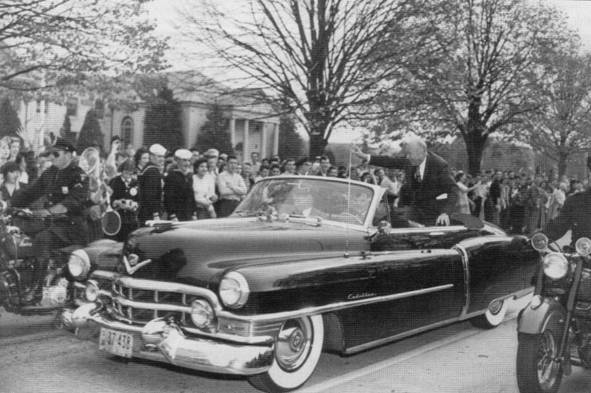
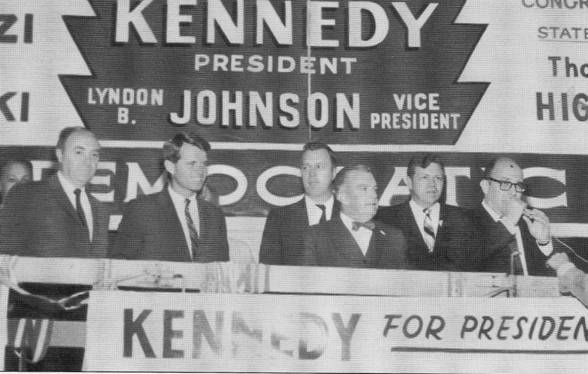 I can remember seeing Dwight Eisenhower when he was running for President. It was on a school day, and all the students went outside to watch the motorcade as it passed by the Old High School on Jerusalem Ave, and there was a time during JFK's run for the presidency when his brother campaigned for him and attended a party rally at Mid Island Shopping Plaza.
I can remember seeing Dwight Eisenhower when he was running for President. It was on a school day, and all the students went outside to watch the motorcade as it passed by the Old High School on Jerusalem Ave, and there was a time during JFK's run for the presidency when his brother campaigned for him and attended a party rally at Mid Island Shopping Plaza.

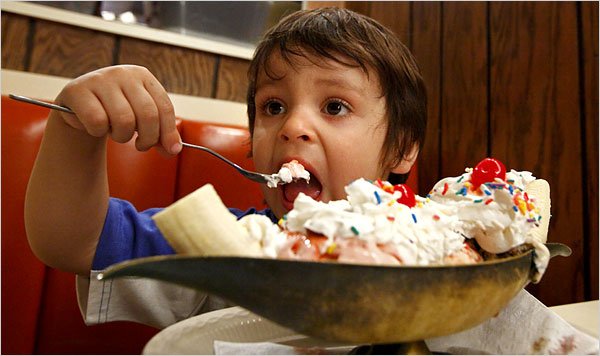 One day my dad took me to the midget races at the old fairgrounds in Mineola . That was exciting and fun, especially since I got to spend the time with my dad. How many remember the roller skating rinks in Mineola and the one on Hempstead Turnpike near Jahn's Ice Cream Parlor?
One day my dad took me to the midget races at the old fairgrounds in Mineola . That was exciting and fun, especially since I got to spend the time with my dad. How many remember the roller skating rinks in Mineola and the one on Hempstead Turnpike near Jahn's Ice Cream Parlor?
I didn't skate too often but it was a lot of fun trying. There were no sidewalks where I lived so practicing with the old steel roller skates was out.
The photo of the Sweet Shop in the June issue is the newer one, not the one that was next to the bakery (the photo below is the original).

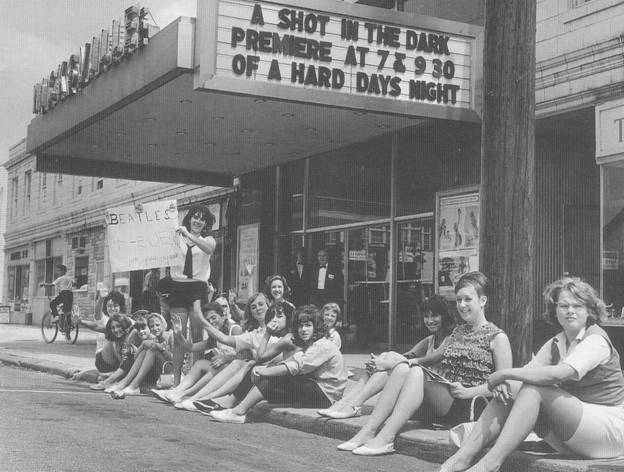 Do you remember the store on the corner of Nicholai Street and Broadway? It was owned by a Greek family and two of their children were in my class but I don't remember their names.
Do you remember the store on the corner of Nicholai Street and Broadway? It was owned by a Greek family and two of their children were in my class but I don't remember their names.
And remember the good times we had at the old Hicksville Movie across from the firehouse...
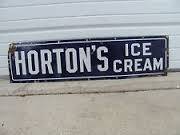 There was also a soda fountain that served Horton's Ice Cream down near Old Country Rd. and was owned by the Lindemann family, and my cousin married one of the Lindemann sons.
There was also a soda fountain that served Horton's Ice Cream down near Old Country Rd. and was owned by the Lindemann family, and my cousin married one of the Lindemann sons.
I also have fond memories of The Alibi and their great pizzas.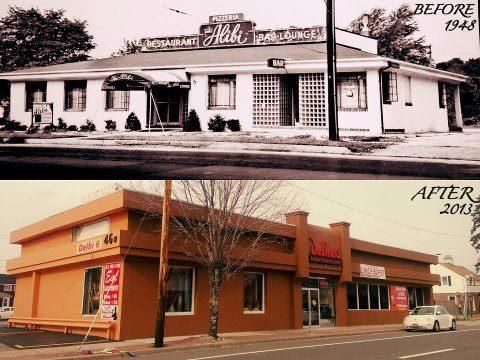
Jay Pogiali's father owned the restaurant where Jeanne Neumann and Artie Schultz went often for a slice or two. Mr. Schultz, Artie's dad, owned the gas station on the point right next to The Alibi.
Hicksville is so changed now. I know everything changes with time, but most of the old landmarks are gone and I only go there for my dentist appointments. Now that Grumman is gone it's not the same place.
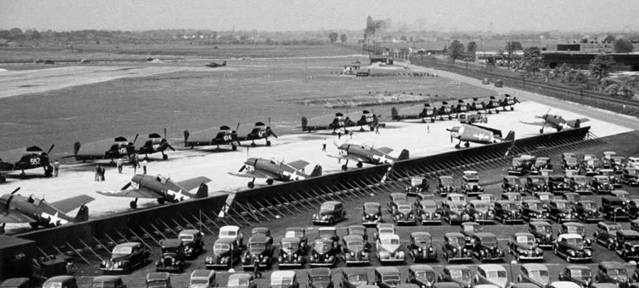 Pictured above are F6F Hellcats being readied for delivery to the military.
Pictured above are F6F Hellcats being readied for delivery to the military.
Look at the old cars!!!
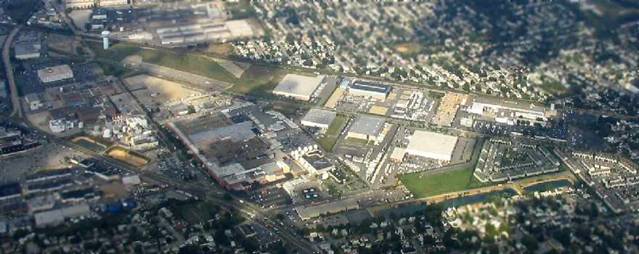 And above is an aerial view of the facility...
And above is an aerial view of the facility...
How can we forget the old Farmers Market with the merry go round and those fabulous pickles???
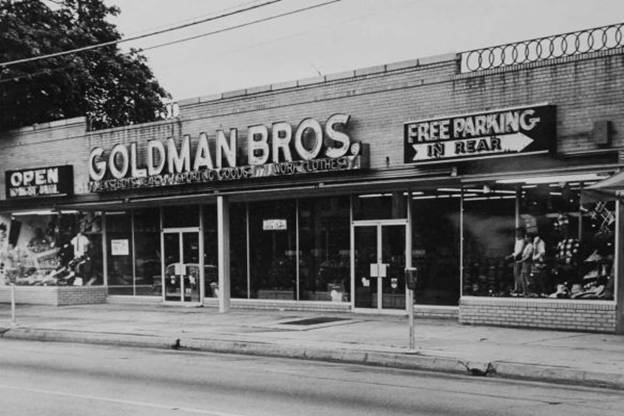 Did you ever shop at the original Goldman Brothers???
Did you ever shop at the original Goldman Brothers???
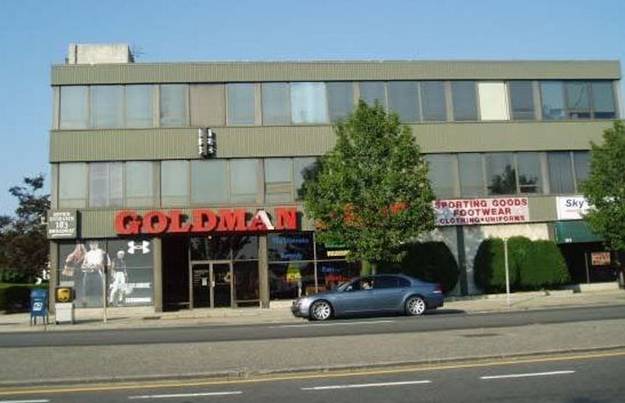 Editor Note...they are closed now in 2013 after a long run in their newer facility...
Editor Note...they are closed now in 2013 after a long run in their newer facility...
We have seen a lot of history in our lifetimes. And the memories of growing up in Hicksville continues.
Casale's Corner
The World is Mine...Author unknown
Today, upon a bus, I saw a very beautiful woman and wished I were as beautiful. When suddenly she rose to leave, I saw her hobble down the aisle. She had one leg and used a crutch. But as she passed, she passed a smile.
Oh, God, forgive me when I whine. I have two legs; the world is mine.
I stopped to buy some candy. The lad who sold it had such charm. I talked with him, he seemed so glad. If I were late, it'd do no harm. And as I left, he said to me, "I thank you, you've been so kind. It's nice to talk with folks like you. You see," he said, "I'm blind."
Oh, God, forgive me when I whine. I have two eyes; the world is mine.
Later while walking down the street, I saw a child I knew. He stood and watched the others play, but he did not know what to do. I stopped a moment and then I said, "Why don't you join them, Dear?" He looked ahead without a word. I forgot, he couldn't hear.
Oh, God, forgive me when I whine. I have two ears; the world is mine.
With feet to take me where I'd go. With eyes to see the sunset's glow. With ears to hear what I would know.
Oh, God, forgive me when I whine. I've been blessed indeed; the world is mine.
If this poem makes you feel thankful, just forward it to your family & friends, & thank God daily for your blessings. After all, it's just a simple reminder that we have so much to be thankful for! Give the gift of love - it never comes back empty!


